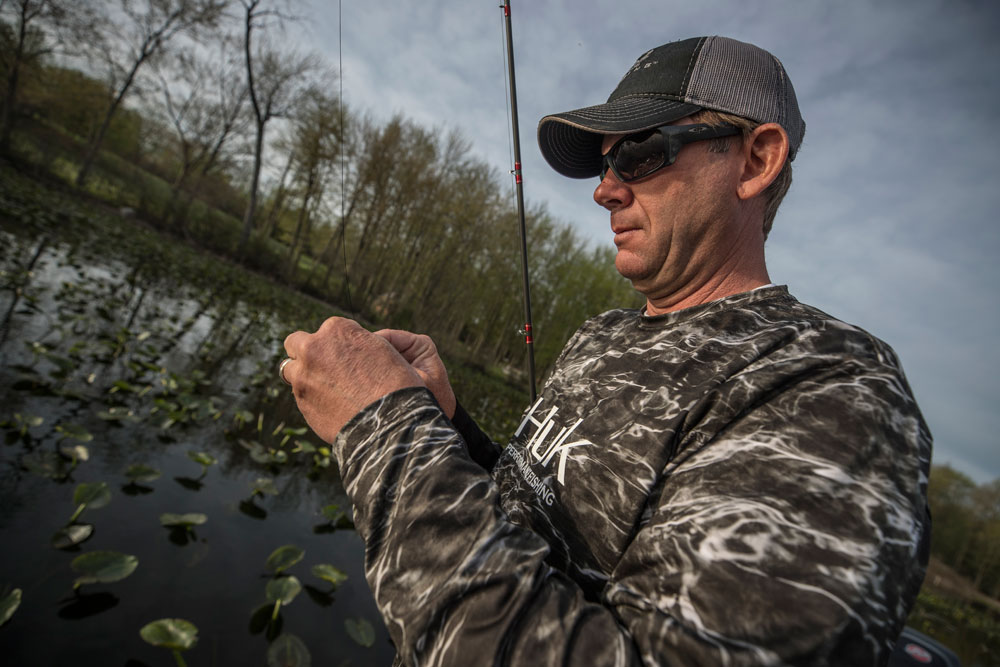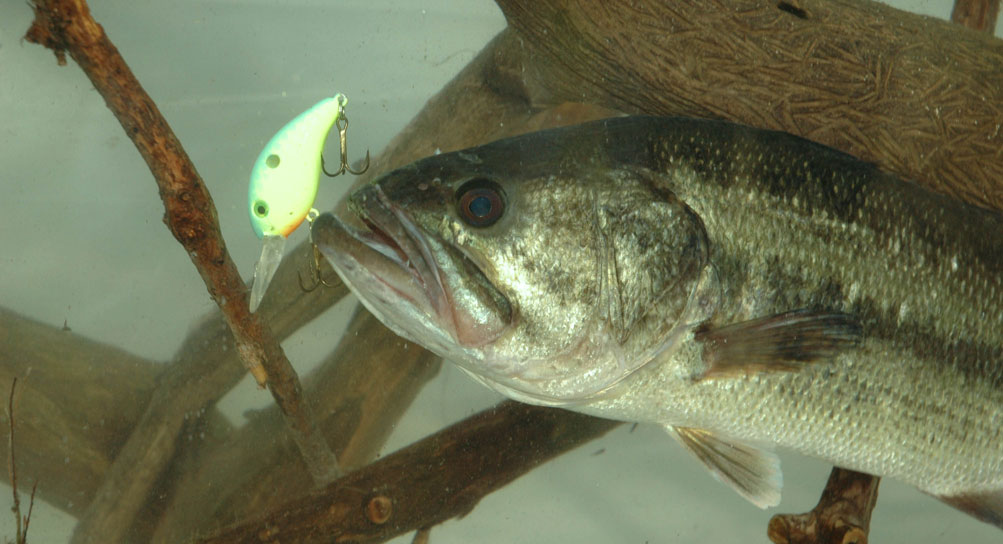
In the past, most anglers used crankbaits in the depth of water for which the crankbaits were designed to fish. For instance, if you were fishing in four feet of water, you’d fish a crankbait that would run about 4-feet deep. If you were fishing in 10 feet of water, you’d fish with a crankbait that would only dive down to 10 feet. If you were fishing deeper than 10-12 feet, you’d choose a crankbait that would swim down to those deeper depths.
However, in more recent years, tournament anglers and weekend fishermen both have started overpowering their crankbaits, a term that means that they use a deeper-diving crankbait than the bottom they’re fishing. For instance, if someone is fishing in 8-foot-deep water, he may be using a crankbait that will dive down to 12 feet of water or even deeper. Then the bill of that crankbait will dig in the bottom, make lots of noise and possibly kick up some mud off the bottom. This technique is very productive to solicit more strikes from bass.
But here’s one thing I’m cautious about when I’m overpowering a crankbait. I don’t use a crankbait that’s designed to run a lot deeper than the water where I’m fishing. Here’s why. Lure designers have developed crankbaits for different depths, since they’ve learned at what depth a lure has the best action and is most efficient to fish in a certain body of water. So, when you go too far on overpowering a crankbait and having it dig the bottom, you’re not getting the maximum efficiency out of the crankbait. You’re also not fishing it where it’s been designed to perform at its best.
If I were fishing in water depths of eight feet, I’d probably want a crankbait that has been designed to run at 10 feet – not at 12 or 15 feet. When I overpower my crankbait, I don’t want to lose its efficiency in the depth of water in which it’s been designed to run, but I do want the bill of the crankbait to plow the bottom and make noise as it hits rocks, gravel, wood or any other underwater type of cover.

One of the best examples of overpowering a crankbait is when you’re using a crayfish-colored crankbait and fishing it around rocks or gravel. Then the crankbait looks like a crayfish and scoots along the bottom the way a crayfish runs the bottom to get away from bass. But the crayfish-colored crankbaits aren’t the only color of crankbaits we use when overpowering a bait. We may use a shad-colored crankbait to run along an underwater ledge that many bait fish use as a highway. My general rule of thumb on overpowering a crankbait is I attempt to keep that crankbait in water that’s no more than two feet deeper than it’s been designed to run.
The crankbait is one of the most efficient lures I fish for bass. I can cover lots of water with it, I can use a crankbait in a wide variety of water depths, the lures come in many different colors, and by changing my rod angle, I can switch the depth at which the crankbait runs. For instance, if I hold my rod tip high, I can make the crankbait run more shallow. If I put my rod tip in the water, I can make the crankbait run deeper. If I use light line and make long casts, I can cause the crankbait to dive deeper, or if I use heavy, more buoyant line, I can make that crankbait run more shallow.
I think what’s important to remember here is that crankbaits aren’t just one lure. A crankbait is a classification of lures with numerous options to fish many different fishing situations. Body design, lip design and other factors help determine which lure in a crankbait family of lures is best for the fishing conditions you may have on the day you decide to go fishing. I’ve always got my tackle box stocked with numbers of crankbaits. Most of the time when I’m fishing for bass, I’ll have up to four crankbaits tied on to my rods and laying on my casting deck.



























